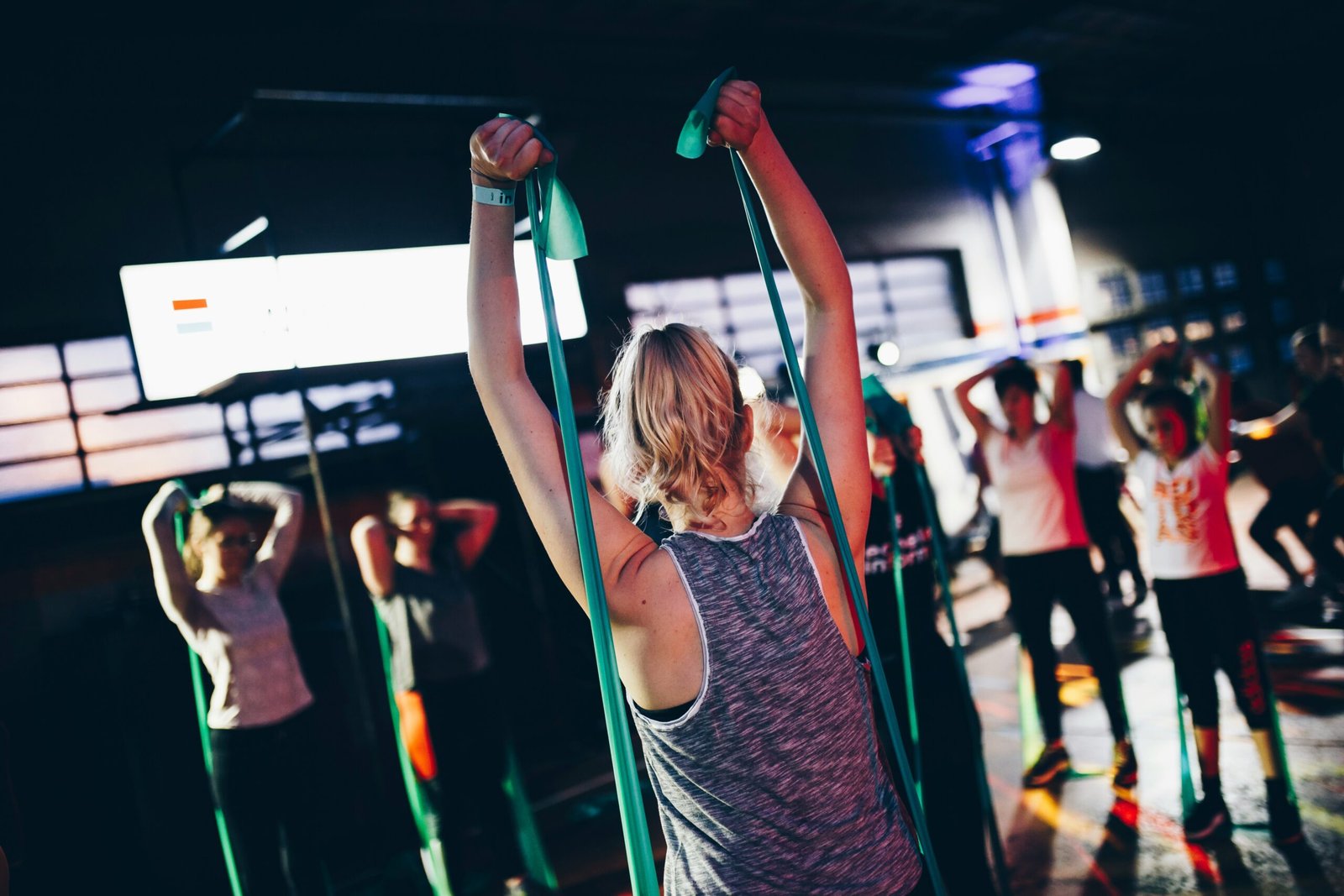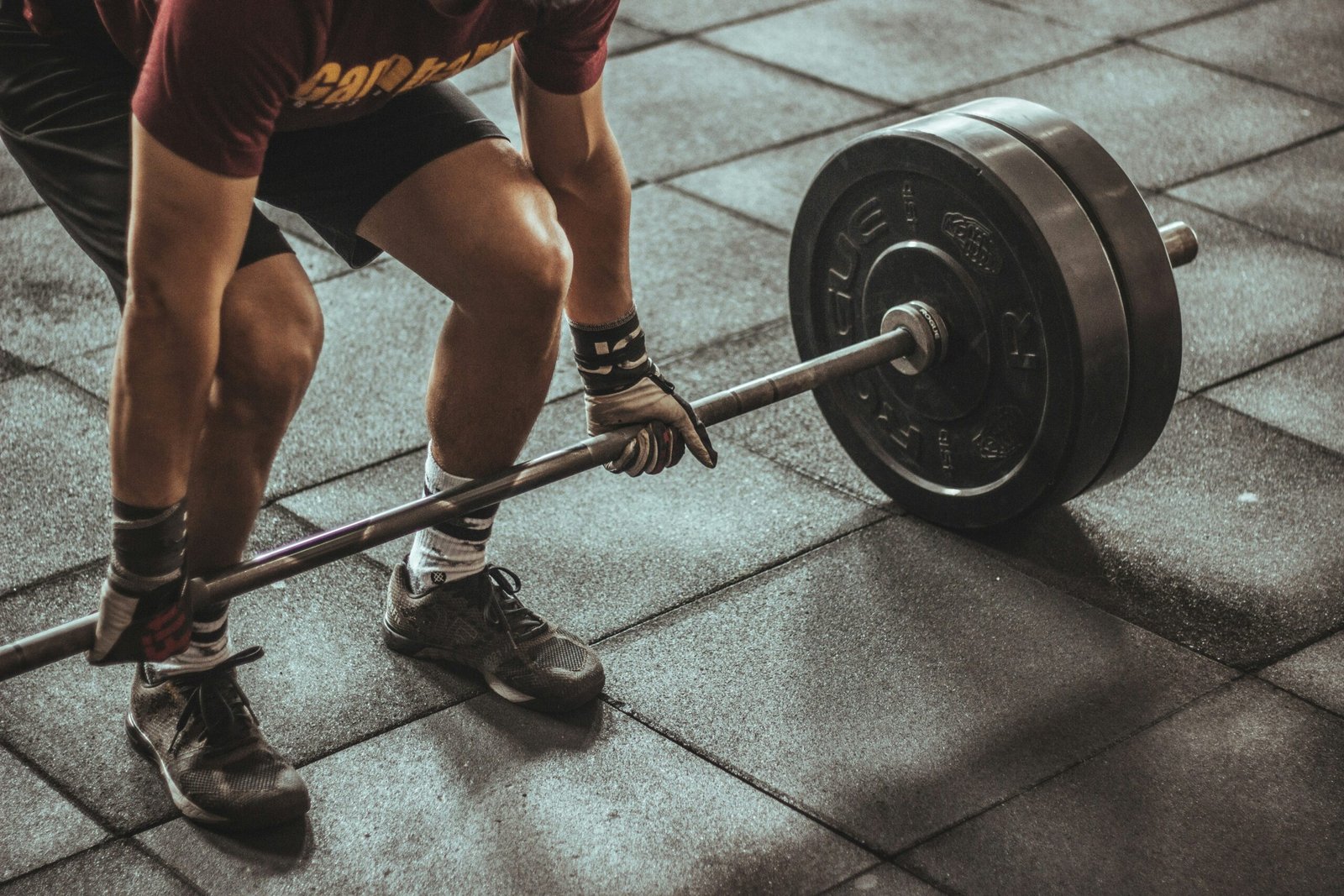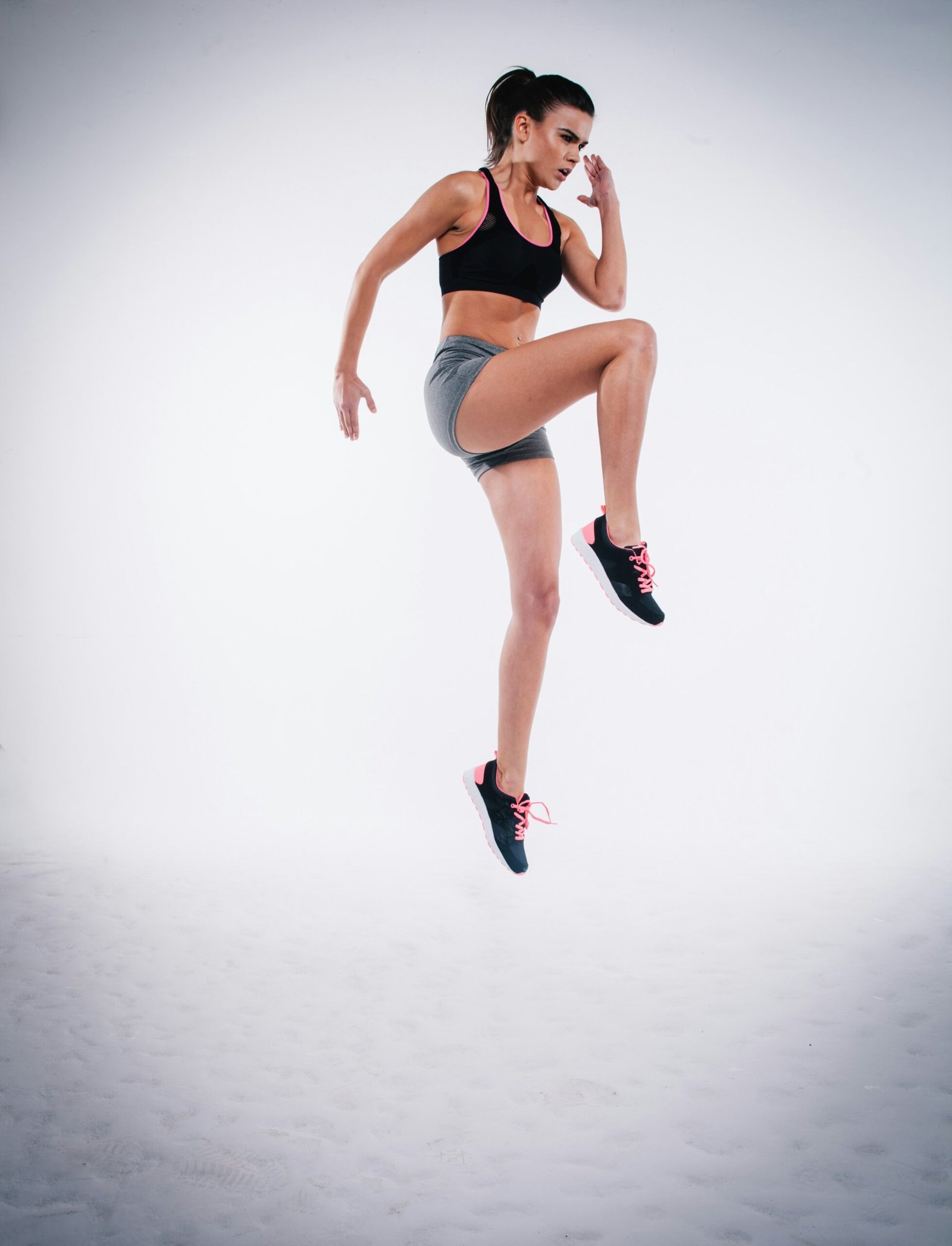Benefits of Pilates Exercise
Pilates exercise offers a multitude of benefits for both the mind and body. One of the key advantages of this workout is its ability to strengthen the core muscles. The core, which includes the muscles of the abdomen, back, and pelvis, is responsible for maintaining stability and proper posture. By targeting these muscles, Pilates helps to improve overall body alignment and support.
In addition to core strength, Pilates also focuses on improving flexibility. Through a series of controlled movements and stretches, this exercise method helps to lengthen and elongate the muscles, increasing range of motion and preventing injuries. Flexibility is essential for maintaining good posture and preventing muscle imbalances, which can lead to pain and discomfort.
Another benefit of Pilates exercise is its ability to enhance body control and coordination. The precise and controlled movements involved in Pilates require a high level of concentration and focus. By practicing Pilates regularly, individuals can improve their mind-body connection and develop better control over their movements. This can have a positive impact on daily activities and sports performance.
Furthermore, Pilates is a low-impact exercise that is gentle on the joints, making it suitable for people of all ages and fitness levels. Unlike high-impact activities such as running or jumping, Pilates is easy on the knees and other vulnerable joints. This makes it an excellent choice for individuals recovering from injuries or those looking for a safe and effective workout option.
Moreover, Pilates exercise can also help to alleviate stress and promote relaxation. The focus on deep breathing and mindfulness during Pilates sessions can help individuals to reduce stress levels and improve mental well-being. The combination of physical movement and mental focus creates a sense of calm and tranquility, making Pilates an ideal exercise for those seeking stress relief.
In conclusion, Pilates exercise offers a wide range of benefits for both the body and mind. From strengthening the core muscles to improving flexibility and enhancing body control, this workout method can help individuals achieve their fitness goals while promoting overall well-being. Whether you are a beginner or an advanced practitioner, Pilates is a versatile exercise that can be tailored to meet your specific needs and abilities.
The Principles of Pilates
Before diving into the various Pilates exercises, it’s important to understand the principles that form the foundation of this fitness practice. These principles are essential for achieving optimal results and maximizing the benefits of Pilates.
1. Concentration: Pilates requires a high level of focus and concentration to perform the exercises correctly and effectively. By concentrating on each movement and being fully present in the moment, you can engage the targeted muscles and maintain proper form throughout the exercises. This level of concentration allows you to connect your mind and body, enhancing the mind-body connection that is central to Pilates.
2. Control: The exercises in Pilates are performed with control and precision, emphasizing quality of movement over quantity. This principle ensures that every movement is deliberate and intentional, allowing you to engage the appropriate muscles and avoid relying on momentum or external forces. By maintaining control throughout the exercises, you can effectively strengthen and tone your muscles while minimizing the risk of injury.
3. Centering: Pilates exercises are designed to strengthen the body’s core muscles, also known as the “powerhouse.” The powerhouse includes the abdominal muscles, lower back, hips, and glutes. The principle of centering focuses on activating and engaging these core muscles to provide a strong and stable foundation for movement. By strengthening the powerhouse, you can improve your posture, stability, and overall body alignment.
4. Flow: The movements in Pilates should be fluid and graceful, with a continuous flow from one exercise to the next. This principle emphasizes the importance of smooth transitions and seamless movement patterns, creating a sense of rhythm and flow throughout the workout. By maintaining a fluid and continuous flow, you can increase the cardiovascular benefits of Pilates and enhance the overall efficiency of your workout.
5. Precision: Each exercise in Pilates is performed with attention to detail and proper alignment. Precision is crucial to ensure that you are targeting the intended muscles and maximizing the benefits of each movement. By focusing on precision, you can improve your body awareness and develop a deeper understanding of your movement patterns. This principle also helps to prevent injuries by ensuring that you are performing the exercises correctly and safely.
6. Breathing: Proper breathing techniques are an integral part of Pilates. The principle of breathing focuses on deep, diaphragmatic breathing to enhance relaxation and oxygenation of the muscles. By coordinating your breath with each movement, you can improve your body’s efficiency and enhance your overall performance. The breath acts as a natural rhythm for the exercises, helping you to maintain control, focus, and stability throughout your Pilates practice.
By incorporating these principles into your Pilates practice, you can enhance the effectiveness of the exercises and achieve a greater mind-body connection. Understanding and applying these principles will not only improve your physical fitness but also promote a sense of mindfulness and well-being.
The Benefits of Pilates Exercise
Pilates offers numerous benefits for both the body and mind. Here are some of the key advantages of incorporating Pilates into your fitness routine:
1. Improved Core Strength
One of the primary focuses of Pilates is strengthening the core muscles. By targeting the deep abdominal muscles, lower back, and pelvic floor, Pilates helps improve posture, stability, and overall core strength. A strong core not only enhances your physical performance in other activities but also reduces the risk of back pain and injuries.
2. Increased Flexibility
Pilates exercises emphasize the importance of flexibility and range of motion. Through controlled and dynamic movements, Pilates helps lengthen and stretch the muscles, improving flexibility and joint mobility. Increased flexibility can enhance athletic performance, prevent muscle imbalances, and reduce the risk of injuries.
3. Enhanced Body Awareness
Pilates promotes body awareness, mindfulness, and proper alignment. By focusing on precise movements and engaging the mind-body connection, Pilates helps you become more aware of your body’s alignment, posture, and movement patterns. This heightened body awareness can translate into improved posture, coordination, and overall body control in your everyday activities.
4. Improved Posture and Alignment
Poor posture is a common problem in today’s sedentary lifestyle. Pilates exercises target the muscles responsible for maintaining good posture, such as the deep abdominal muscles and the muscles of the back and shoulders. Regular practice of Pilates can help correct postural imbalances, improve alignment, and alleviate common issues like rounded shoulders and forward head posture.
5. Stress Relief and Mind-Body Connection
Pilates incorporates breathing techniques and mindful movement, creating a sense of relaxation and stress relief. The focus on deep, diaphragmatic breathing helps calm the nervous system and promotes a greater mind-body connection. Regular Pilates practice can help reduce anxiety, improve mental clarity, and enhance overall well-being.
In addition to these benefits, Pilates can also improve muscle strength and tone, increase energy levels, and aid in weight loss. The controlled movements and emphasis on proper form in Pilates help build lean muscle mass, which can boost metabolism and contribute to a more toned physique. Furthermore, Pilates is a low-impact exercise that is gentle on the joints, making it suitable for people of all ages and fitness levels.
Another advantage of Pilates is its versatility. Whether you prefer mat-based exercises or using specialized equipment like the reformer or the Cadillac, Pilates offers a wide range of options to suit your preferences and goals. Additionally, Pilates can be easily modified to accommodate individual needs and limitations, making it suitable for individuals recovering from injuries or managing certain medical conditions.
Furthermore, Pilates is not just a physical workout but also a mental and emotional one. The focus on breathing and mindfulness during Pilates sessions can help reduce stress, improve concentration, and promote a sense of overall well-being. The mind-body connection fostered by Pilates can also have a positive impact on sleep quality, mood, and self-confidence.
In conclusion, Pilates is a holistic exercise method that provides numerous benefits for both the body and mind. From improved core strength and flexibility to enhanced body awareness and stress relief, Pilates offers a comprehensive approach to fitness and well-being. Whether you are an athlete looking to enhance your performance or someone seeking to improve their overall health, incorporating Pilates into your fitness routine can be a transformative experience.
Types of Pilates Exercises
There are various types of Pilates exercises that can be performed using different equipment or just the body’s own resistance. Here are a few examples:
1. Mat Pilates
Mat Pilates is a series of exercises performed on a mat using just your body weight as resistance. These exercises focus on core strength, flexibility, and overall body conditioning. Mat Pilates is accessible to people of all fitness levels and can be done at home or in a studio with minimal equipment.
2. Reformer Pilates
The Pilates Reformer is a piece of equipment consisting of a sliding carriage, springs, and various attachments. Reformer Pilates exercises provide resistance and support, allowing for a wide range of movements to target different muscle groups. The Reformer adds variety and challenge to the Pilates workout, making it suitable for both beginners and advanced practitioners.
3. Cadillac Pilates
The Cadillac, also known as the Trapeze Table, is another popular piece of Pilates equipment. It consists of a raised platform with various bars, straps, and springs. Cadillac Pilates exercises offer a full-body workout that combines strength, flexibility, and balance. The Cadillac is often used in rehabilitation settings due to its versatility and ability to modify exercises for different needs and abilities.
4. Pilates Chair
The Pilates Chair, also known as the Wunda Chair, is a compact piece of equipment that provides a challenging workout for the entire body. It consists of a seat, pedals, and springs that provide resistance. Pilates Chair exercises target the core, legs, and upper body, and can be modified to suit different fitness levels.
5. Pilates Ball
The Pilates Ball, also known as the Swiss Ball or stability ball, is a versatile piece of equipment that can be used to add challenge and variety to Pilates exercises. The ball provides an unstable surface, requiring the activation of core muscles to maintain balance and stability. Pilates Ball exercises can improve core strength, stability, and overall body control.
In addition to these equipment-based exercises, there are also other variations of Pilates that focus on specific goals or target specific populations. For example, prenatal Pilates is designed for pregnant women to help maintain strength and flexibility during pregnancy. Postnatal Pilates, on the other hand, focuses on restoring core strength and stability after childbirth.
Another variation is Pilates for athletes, which incorporates exercises that are specifically tailored to enhance performance in sports such as running, swimming, or golf. These exercises focus on improving strength, flexibility, and body awareness, which can help athletes prevent injuries and improve their overall performance.
Furthermore, there are Pilates exercises that are specifically designed for older adults or individuals with certain health conditions. These exercises are modified to accommodate for any physical limitations or restrictions, making Pilates a suitable form of exercise for people of all ages and abilities.
Overall, Pilates offers a wide range of exercises that can be customized to meet individual needs and goals. Whether you prefer to use equipment or rely on your body’s own resistance, Pilates can provide a challenging and effective workout that improves strength, flexibility, and overall body conditioning.
Getting Started with Pilates
If you’re new to Pilates, it’s recommended to start with a qualified instructor who can guide you through the proper techniques and alignment. Here are a few tips to help you get started:
1. Find a Qualified Instructor
Look for a certified Pilates instructor who has experience working with beginners. An instructor can help you understand the principles of Pilates, teach you proper form and technique, and provide modifications based on your individual needs and abilities.
2. Start with a Beginner’s Class
Begin with a beginner’s Pilates class or private session. This will ensure that you learn the foundational exercises and principles before progressing to more advanced movements. Starting with a solid foundation will help you build strength, flexibility, and body awareness safely and effectively.
3. Listen to Your Body
Pilates is a low-impact exercise method, but it still requires effort and concentration. Pay attention to your body and its limitations. If something feels uncomfortable or painful, modify the exercise or take a break. It’s important to work within your own range of motion and gradually build strength and flexibility over time.
4. Be Consistent
Consistency is key when it comes to Pilates. Aim to practice Pilates at least 2-3 times per week to see and feel the benefits. Regular practice will help you progress and improve your strength, flexibility, and overall fitness level.
5. Combine Pilates with Other Forms of Exercise
Pilates can be a great standalone workout, but it can also complement other forms of exercise. Consider incorporating Pilates into your existing fitness routine to enhance your overall strength, flexibility, and body awareness.
When combining Pilates with other forms of exercise, it’s important to choose activities that complement each other. For example, if you enjoy running, Pilates can help improve your core strength and stability, which can enhance your running performance and reduce the risk of injuries. If you’re into weightlifting, Pilates can help improve your flexibility and mobility, allowing you to perform exercises with better form and prevent muscle imbalances.
Additionally, Pilates can be a great way to cross-train and prevent workout plateaus. By incorporating different types of exercises into your routine, you can challenge your body in new ways and prevent boredom. Pilates focuses on core strength, flexibility, and body awareness, which are essential components of overall fitness and can benefit any type of physical activity.
Remember, it’s important to listen to your body and give yourself time to rest and recover. Overtraining can lead to injuries and burnout, so make sure to schedule rest days and prioritize self-care. By combining Pilates with other forms of exercise and maintaining a balanced approach, you can optimize your fitness journey and achieve your goals.


